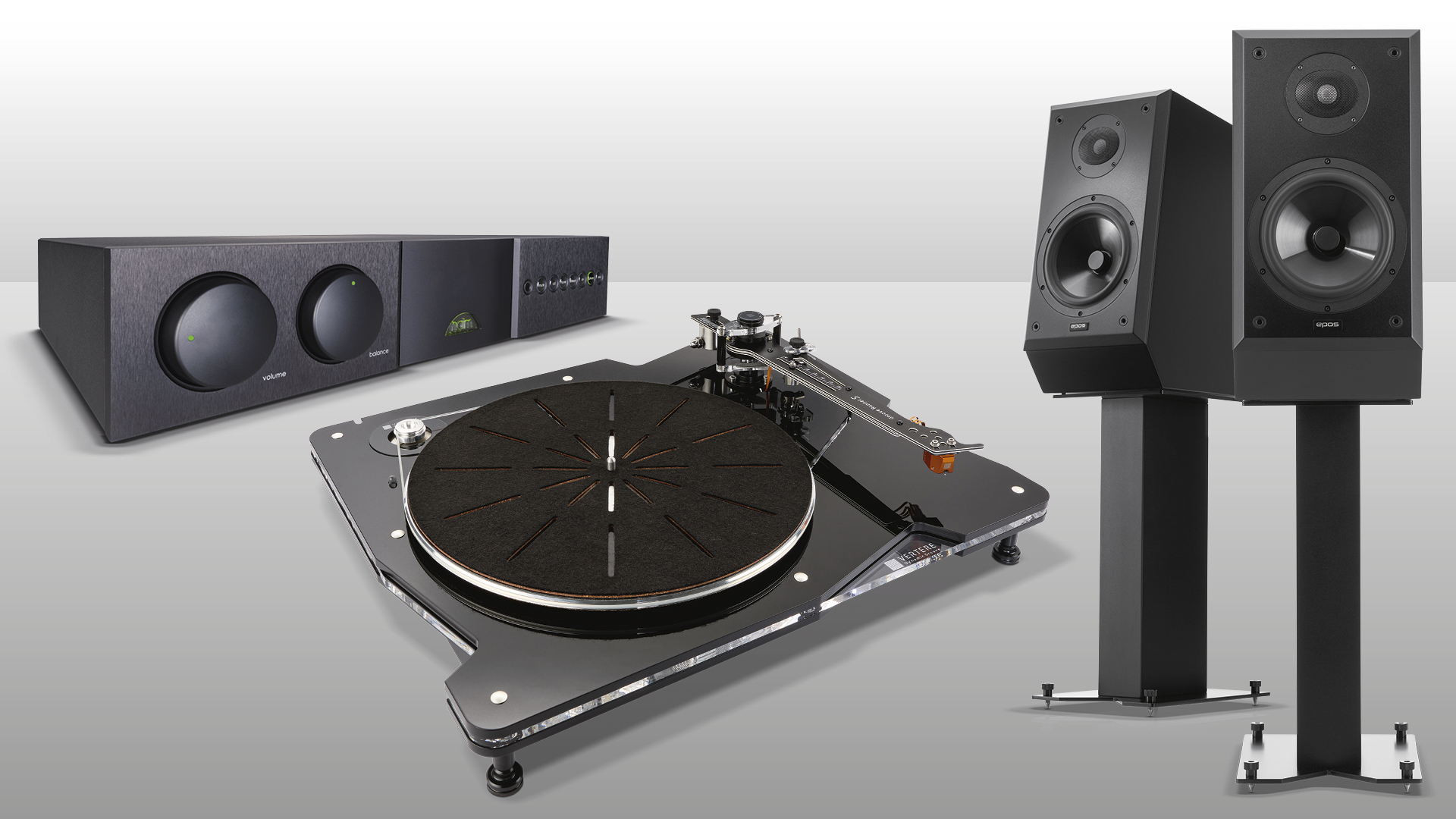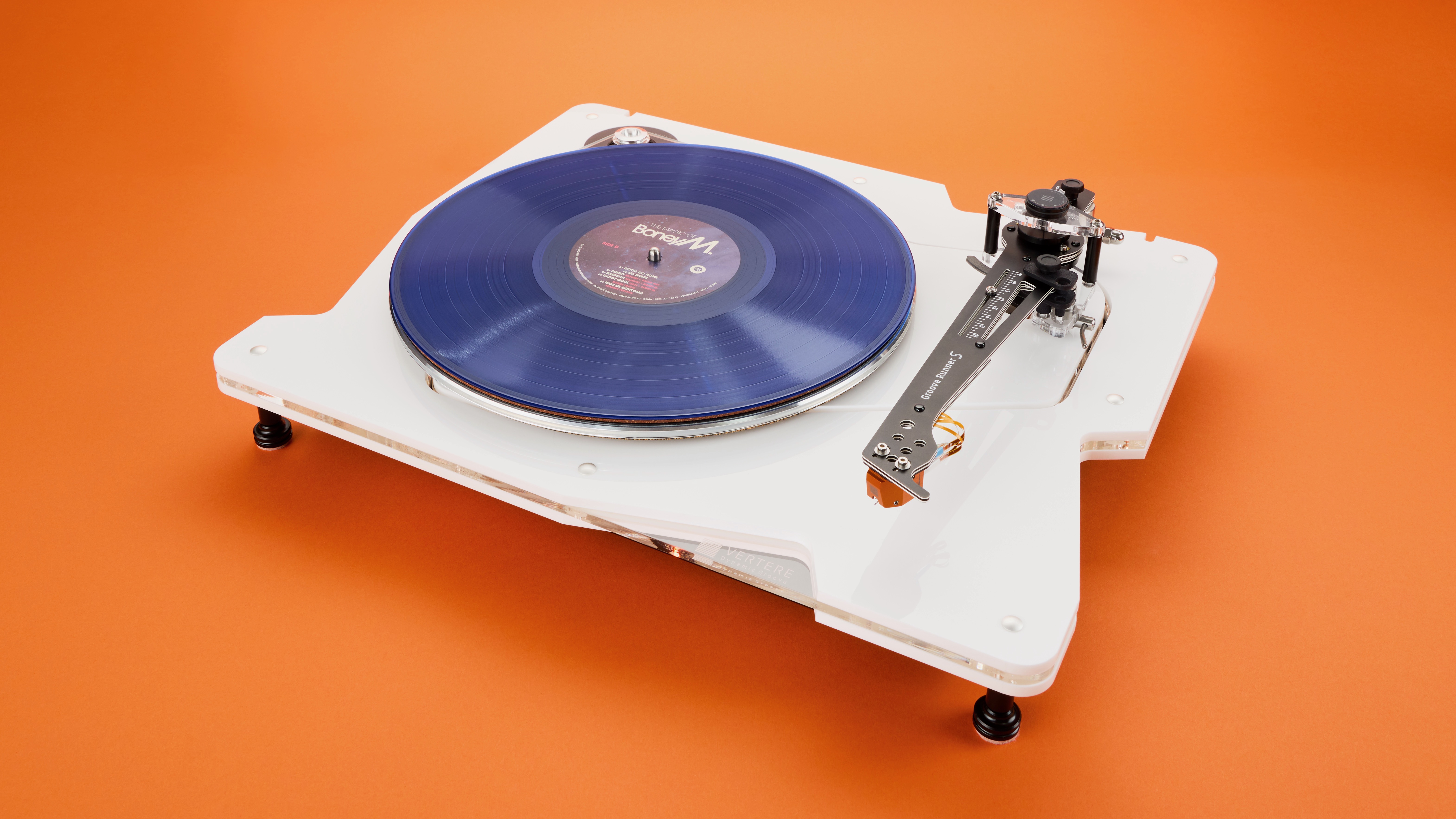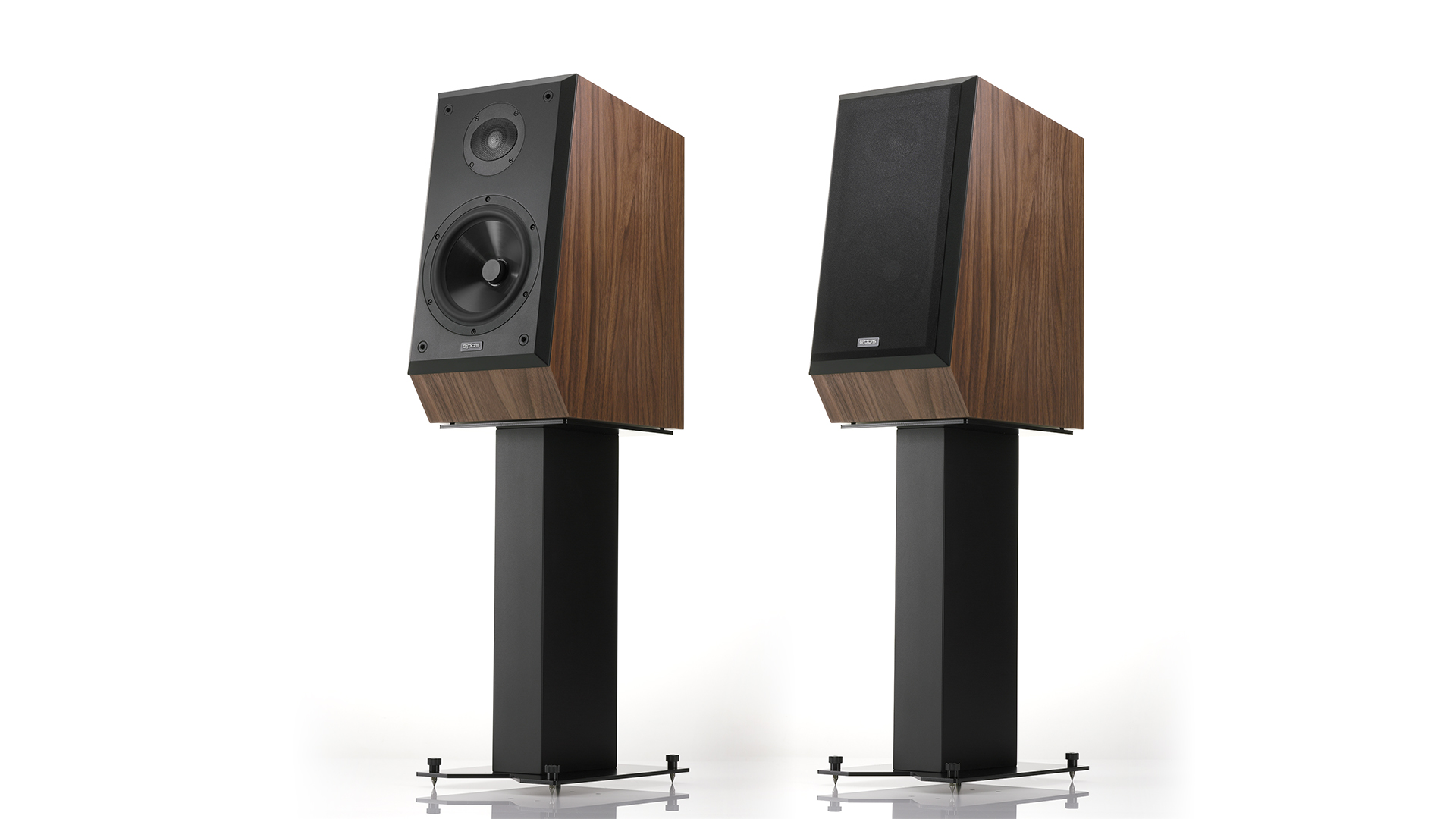A gorgeous high-end turntable system that will delight for many years to come
A vinyl system to stand the test of time

When we were putting together our latest hi-fi stereo systems, this outstanding turntable, amplifier and loudspeaker combination was the one that elicited the most reaction from our senior reviewing staff. Comments ranged from a deeply satisfied “That is such a good system,” via a simple “Oooooooh!” to a rather more impassioned, and profane, “It’s so $%@*ing cool”.
The system
- Turntable: Vertere DG-1 S/Magneto (£3550 / $4995)
- Integrated amplifier: Naim Supernait 3 (£3999 / $4299)
- Stereo speakers: Epos ES14N (£3750 / $4200)
- Total price: £11,299 / $13,494
Which should give some idea as to the high regard in which we hold these three products.
As individual pieces of kit, they delight well enough, of course; as a system, though, working together, they create a synergy that has to be heard to be believed. It’s enough to raise a swear word or two of admiration, as we have already seen.
Turntable: Vertere DG-1 S/Magneto

The Vertere DG-1 S turntable, for example, is a really cleverly engineered piece of hi-fi equipment. The company doesn’t simply take its top-end designs and try to make them cheaper. Instead, it takes a fresh and innovative look at a new product and sees what it can do for the budget it has decided to set itself.
One of the most distinctive things about the original DG-1 deck was the flat arm. Vertere did this to avoid the resonances of traditional metal-tube designs. The basic flat shape hasn’t changed in the new S version but the construction has moved from a triple-layered aluminium/polymer sandwich to one that uses two bonded pieces of a five-layered polymer. Where do the signal wires go? They are flexible PCB signal conductors and sit between the two polymer sections.
That’s not the only unusual thing in this arm. Rather than use traditional metal bearings, Vertere has gone for a Kevlar thread for the vertical movement and nylon for the horizontal – the original design used nylon for both. There’s additional adjustability now and greater consistency in the build. But the idea behind using the threads remains unchanged, and that’s to minimise stiction and noise.
As we say: innovative.
The latest hi-fi, home cinema and tech news, reviews, buying advice and deals, direct to your inbox.
The DG-1 S starter package comes with the company’s Magneto moving-magnet cartridge. It’s a good, solid performer but the deck can easily be well upgraded with a jump to more ambitious alternatives such as Vertere’s own Sabre moving-magnet cartridge which will show that this deck can comfortably cope with better-quality partners.
But the Magneto is a very decent starting point, helping the Vertere to provide a musical and entertaining sound, one that is rhythmically as surefooted as they come. And it has a spring in its step when it comes to rendering dynamic nuances. Despite it resolving an immense amount of detail, therefore, we find ourselves lost in the music rather than encouraged to analyse the recording or production.
In reviewing the DG-1 S/Magneto deck, we listened to Four Tet’s There Is Love In You and concluded that the track could have been made just to highlight the DG-1 S’s strengths. “The mass of instrumentation shows off the deck’s excellent resolution and its ability to keep track of a multitude of musical strands without getting confused. Just as importantly, unlike some other highly resolving products, the Vertere doesn’t sound like it is diminishing the music’s sense of freedom or life despite having all that control. This is a neat balancing act few manage to do well.
“This album’s complex polyrhythms are delivered with verve and there’s no shortage of punch and drive when the music demands. We particularly love the way this Vertere delivers bass frequencies; they are taut, agile and tuneful but also beautifully textured.” Which is a great way of summing up the deck in this system.
Integrated amplifier: Naim Supernait 3

The amplifier with which we have paired our turntable is an old favourite. The Supernait 3 is arguably the best-value product that Naim produces. Now in its third generation, this amp has always seemed to offer everything we like about the company’s far pricier pre/power combinations, but in a neater package and at a more affordable price. In effect, it gives you a full hit of Naimness in one box at a relatively reasonable price.
The Supernait 3 sounds solid and muscular, and it never seems as though it has to try too hard to make the speakers bend to its high expectations. That confidence works wonders for the listener; when that subliminal messiness of an amplifier struggling isn’t present, it’s easier to focus on the music instead. That’s what the Supernait, regardless of generation, has always done best.
It has a fast, punchy sound that is backed with real heft at low frequencies. There is truly impressive organisation on show and the amp has the uncanny ability to track a multitude of musical strands and still tie them together as a cohesive and musical whole.
Detail resolution is good, and it’s easy to get insight into the recording and the production methods used in a piece of music. The joy of it, though, is that it never feels as though the Naim makes this a priority. It’s simply about getting to the heart of the musical message and feeling the emotion that the artist intended. And we can’t really ask for a whole lot more than that.
Stereo speakers: Epos ES14N

The final part of this magnificent three-piece hi-fi jigsaw is the Epos loudspeakers. The ES14N is a largish two-way standmounter, just like the original design released back in the early ‘80s. But while many recent homages to former products are much more rehashed versions of the original, Epos felt it would be a waste to ignore the progress made in speaker design over the past four decades or so. The result is that in all aspects of engineering, the ES14N are as modern as any rival.
It doesn’t take long to recognise their impressive clarity and precision, and over time the speakers settle into sounding wonderfully cohesive and balanced. What initially comes across as a rather thin, possibly even disjointed treble soon calms and integrates beautifully with the midrange, delivering as seamless a performance as we have heard at this level of speaker. Dynamics gain considerably in expression too.
These standmounters major in analysis, control and organisation. The ES14N are bold and confident sounding, refusing to get flustered even with complex music. Push volume levels and they stay composed; play quietly and they remain persuasive. Sounding good at low levels is a rare talent, but it’s one that we really appreciate.
When set up with care, the Epos pair project a large and expansive soundstage, and pack it with precisely focused and layered instruments. Their stereo stability is unquestionable, even when the music becomes demanding. There is a good amount of bass on offer, and it is nicely blended with the rest of the frequency range. This is a really grown-up, great-sounding pair of standmounters.
While they are in some respects an homage to Epos speakers past, in our view, it is how these speakers compare with current rivals that matter most. In this respect, the ES14N ace things. They are beautifully balanced and insightful, delivering an all-round performance that we haven’t heard bettered at the money.
Verdict
And they fit as the perfect third leg in a perfectly balanced platform of hi-fi brilliance. This is a system for the ages, that is saying, loud and proud: “First and foremost, we love music.”
MORE:
Love CDs only? This modern CD system offers a simple but winning combination
Love CDs and streaming and vinyl? This versatile system (with headphones) can play it all
How to add a music streamer to your hi-fi system
I've heard over 150 products this year, and these are my 5 hi-fi highlights

Jonathan Evans is the editor of What Hi-Fi? magazine, and has been with the title for 18 years or so. He has been a journalist for more than three decades now, working on a variety of technology and motoring titles, including Stuff, Autocar and Jaguar. With his background in sub-editing and magazine production, he likes nothing more than a discussion on the finer points of grammar. And golf.
